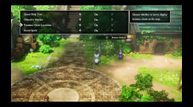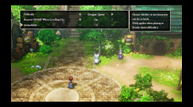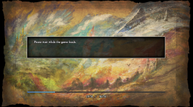
Which is the best version of Dragon Quest I & II HD-2D Remake? PS5, Switch 2, Xbox, Switch, and PC tested
Dragon Quest I & II HD-2D Remake just launched following last year's Dragon Quest III HD-2D Remake. Like I did with the latter, I've now had a chance to play and test the former on all platforms to see how Square Enix's newest Dragon Quest remake scales across different hardware. Unlike Dragon Quest III HD-2D Remake, Dragon Quest I & II HD-2D Remake was released for both Switch and Switch 2 simultaneously. For today's feature, I will cover Dragon Quest I & II HD-2D Remake on PS5, Xbox Series X, the Steam version on Steam Deck, the Steam version on ROG Ally, the Xbox on PC (Play Anywhere) version on ROG Ally, Switch version on Switch OLED, Switch version on Switch 2 for backward compatibility, and the native Switch 2 version on Switch 2.
This feature follows the ones I've done on other Square Enix games like Triangle Strategy, Final Fantasy IX, the Final Fantasy Pixel Remaster series, and Chrono Trigger if you haven't read them yet. I aim to help you decide where to play Dragon Quest I & II HD-2D Remake if you have access to multiple platforms and cover what you need to know for each version of the game going over visuals, performance, load times, and more.

Dragon Quest I & II HD-2D Remake feature differences compared to Dragon Quest III HD-2D Remake
Dragon Quest I & II HD-2D Remake launched simultaneously on all platforms and there are no content differences between any versions. There are technical differences though which I will cover in this feature. I want to note that Dragon Quest I & II HD-2D Remake does bring new in-game difficulty and quality of life compared to Dragon Quest III HD-2D Remake. The PC version also compiles shaders on booting up to prevent hitching and stuttering. The new difficulty options let you tweak the experience more based on what difficulty mode you are playing on and you can also now have treasure chests and secret spots displayed on the map.
While the Switch version of Dragon Quest III HD-2D Remake saw a free enhancement patch for Switch 2, Dragon Quest I & II HD-2D Remake has both a Switch and Switch native release. It is also worth noting that there is no upgrade path from Switch to Switch 2, though the Switch 2 version of Dragon Quest I & II HD-2D Remake can detect the Switch save data for Dragon Quest III HD-2D Remake. If you plan on buying Dragon Quest I & II HD-2D Remake for Switch or Switch 2, make sure you get the one you want to stick with since you can't even sync your save data across versions as I covered here.
Dragon Quest I & II HD-2D Remake visuals and performance differences across PS5, Xbox, Switch 2, PC, and Switch
Dragon Quest I & II HD-2D Remake is a lot like Dragon Quest III HD-2D Remake with how it scales across platforms, but I was curious to see how the Switch and Switch 2 versions would be this time. This is because Dragon Quest III HD-2D Remake's Switch release got upgraded for Switch 2 but Dragon Quest I & II HD-2D Remake has a native Switch 2 release.
Dragon Quest I & II HD-2D Remake has been developed by Ardtink and it supports up to 60fps on all current platforms including PC. It also only supports the 16:9 aspect ratio. This means the PC version does not have 16:10 support for Steam Deck or taller screens, no 21:9 or 32:9 support for ultrawide screens, and it also does not support 120fps like some other HD-2D games. You will need to use a mod to remove these limitations.
With that out of the way, I'm going to start with the Switch version. Dragon Quest I & II HD-2D Remake on Switch is capped at 30fps in both docked and handheld modes. There are no performance or graphics quality options on Switch like every other platform. The Switch version also has very long load times when played on a Switch 1 itself. Unfortunately, the Switch version of Dragon Quest I & II HD-2D Remake even when played on a Switch 2 is still capped at 30fps with the same visuals. This means it looks quite blurry when played handheld and docked, especially if you play on a 1440p or 4K screen, but the few performance issues in busier areas on Switch 1 get cleaned up on Switch 2 via backward compatibility. Don't expect a free patch like with Dragon Quest III HD-2 Remake.
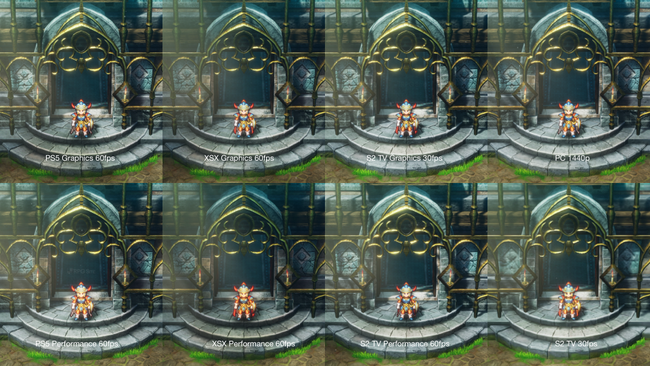
Dragon Quest I & II HD-2D Remake on Switch 2 on the other hand, offers a 30fps with crisper visuals or 60fps performance mode with softer visuals. I was hoping the Switch 2 native version would offer more than what we saw in the Dragon Quest III HD-2D Remake free update, but it is very similar. This is still a huge upgrade over playing the Switch 1 version of Dragon Quest I & II HD-2D Remake on a Switch 2 though. If you play handheld, the 30fps graphics mode looks excellent on the Switch 2 screen. The 60fps mode obviously feels a lot better, but you will have to deal with subnative visuals and I do not like how the HD-2D aesthetic looks when it is upscaled or running at a subnative resolution.
Just like with Dragon Quest III HD-2D Remake, I was surprised to see the PS5 and Xbox Series X versions of Dragon Quest I & II HD-2D Remake feature a graphics and performance visual mode. While these modes on Switch 2 basically give you a 30fps or 60fps target, the graphics and performance modes on PS5 and Xbox Series X both target 60fps. There is no 30fps mode. I didn't run into any noticeable dips in the areas I tested, but this is likely going to be similar to Dragon Quest III HD-2D Remake where the performance mode was for the very few situations where the PS5 and Xbox versions dipped below 60fps. I don't recommend using performance mode on PS5 or Xbox Series X since the visuals are noticeably softer when played on my 1440p monitor. It feels a bit overkill given the graphics (quality) mode is already 60fps with crisp visuals.
Ideally, Square Enix could implement a dynamic resolution option so it only lowers the resolution when required given how stable the rest is so far. Right now, both of these modes might confuse players given they have the same frame rate target with very different resolutions.
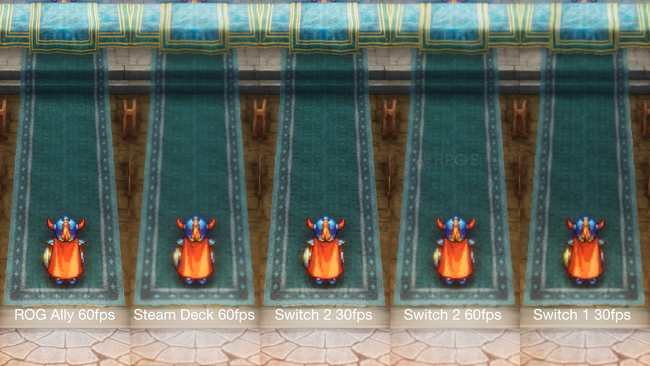
Before getting to the PC version advantages, I want to cover the handheld experience. Visually, Dragon Quest I & II HD-2D Remake on Switch is quite blurry handheld. If you play the Switch 2 version in performance mode, it is still a lot better than the Switch 1 version. If you played Dragon Quest III HD-2D Remake on Switch 1 and were fine with it, there is no major difference with Dragon Quest I & II HD-2D Remake. I just wish Square Enix allowed upgrading or at least transferring save data so that those who buy a Switch 2 eventually can carry over progress into a better version. Right now, the best handheld version is either the ROG Ally or the Steam Deck OLED. If you are ok playing at 30fps, the Switch 2 version is the way to go, but for 60fps I would rather play on Steam Deck and ROG Ally.

Beyond the consoles, the PC version is notable because it lets you disable the depth of field as you can see in the image above. The console versions do not have this option. I get that it is part of the aesthetic, but more options are always better. The PC version can also scale above the console versions with mods. Since Dragon Quest I & II HD-2D Remake is an Unreal Engine game, some mods that worked on Dragon Quest III HD-2D Remake already work on Dragon Quest I & II HD-2D Remake like DQ3Fix, though it is best to wait on the mods to be updated and tested on Dragon Quest I & II HD-2D Remake. Right now, ultrawide with a mod is really good. You can see how it looks on an ultrawide monitor below.
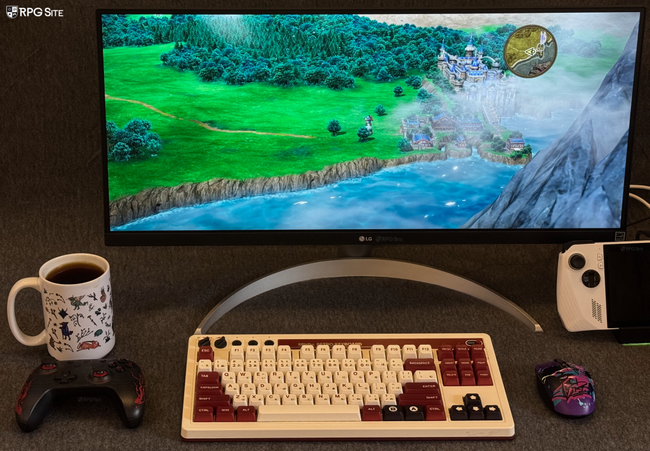
Dragon Quest I & II HD-2D Remake load times across Switch 2, PS5, Steam, Xbox, Xbox on PC, and Switch
To test load times, I used Dragon Quest I & II HD-2D Remake for PS5 on the internal storage, the Xbox version on the Xbox Series X internal storage, the Xbox on PC version on the ROG Ally internal storage, the Steam version on the ROG Ally internal storage, the Steam version on Steam Deck's internal storage, the Switch version on the Switch 2's internal storage, the Switch 2 version on the Switch 2's internal storage, and the Switch version on the internal storage and also tested again on the SD Card on my Switch OLED.
I tested the initial load from dashboard to title screen, loading a save, going in and out of town in Dragon Quest I HD-2D Remake, and loading a battle. I want to note that for some reason the Xbox version has an added 3-5 second delay in just bringing up the game selection screen from the main title screen. I hope this is fixed in an update because this is not present even on the Switch 1 version.
| Platform and test | Dashboard to title | Load save | In and out of town | Battle |
| Switch | 42 - 53 | 9-10 | 4.5 and 5 | 1 to 1.5 |
| Switch on Switch 2 | 22 | 3.5 | 3 both | 0.5 |
| Switch 2 | 20 | 4 | 3.5 both | 0.5 to 1 |
| PS5 | 7-8 | 2.5 | 2.5 both | 1 |
| Xbox Series X | 28 | 2 to 2.5 | 2.5 both | 1 |
| ROG Ally Xbox App | 34-38 | 2.5 | 2.5 both | 1 to 1.5 |
| ROG Ally Steam | 12 | 2 to 2.5 | 2 both | 1 |
| Steam Deck | 25-28 | 2.5 | 2.5 both | 0.5 to 1 |
Note: All load times above are in seconds. *For the Xbox versions on PC and Xbox Series X, the save syncing is not as seamless and quick as with Steam so this time is variable. I had some results where it was quicker, but most times it took the time or range I have listed above. The Switch 1 range lower end is installed to internal storage while the upper end is the SD card.
I am happy to see the digital Switch version see load time improvements on Switch 2, but note that these will not apply the same way to the physical Switch version played on Switch 2. I don't have that to test. Beyond Switch, all versions have good to great load times during gameplay with the PS5 version offering the fastest initial load alongside the Steam version on ROG Ally being the same or better in ways. I am disappointed that once again the Xbox on PC version takes so much longer than the Steam version on the same device (ROG Ally) at the same settings to load. Microsoft needs to sort out the save syncing as well. I can move between my Steam Deck and ROG Ally almost instantly thanks to Steam Cloud, but the Xbox on PC and Xbox console versions take a while to load initially and sync.
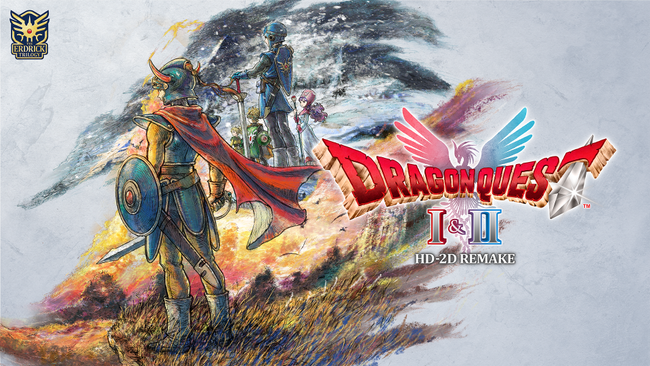
Which version of Dragon Quest I & II HD-2D Remake is the best?
For the best version, I'm going to cover three different use cases. If you play on TV or a monitor at home, the PC with PS5 very close are the best versions taking into account load times, visuals, and performance. The Switch 2 version even in quality mode isn't as good as the PS5, Xbox, or PC versions right now. If you play on a 1440p monitor and are ok with 30fps, the Switch 2 version in its graphics quality mode will be good, but I would recommend the PC and PS5 versions here if you have those options and only play at home on the big screen.
For playing on the go, my answer will vary based on whether you want to play at 60ps or 30fps. For 30fps play, the Switch 2 version is my favorite since it looks great on the larger screen with crisp visuals. Moving to 60fps, I rate the Switch 2 version below the Steam Deck OLED and ROG Ally (Steam). The Steam Deck OLED delivers the best 60fps portable experience right now with the ROG Ally coming second. The ROG Ally does 1080p 60fps portable, but the screen is a downgrade from the Steam Deck OLED.
If you want a hybrid experience to play both at home and on the go, the Switch 2 delivers the best all in one experience that is more seamless than the Steam Deck can do. If you play on Xbox Series and also have a ROG Ally (or any other PC handheld) or play on PC and have a Steam Deck (or other PC handheld), you can get a great TV and portable experience though. The Xbox Play Anywhere experience is not as good as Steam with syncing so PC and Steam Deck is the best for that. I also want to note that if you only play at 30fps both docked and handheld, the Switch 2 version is an even easier recommendation.
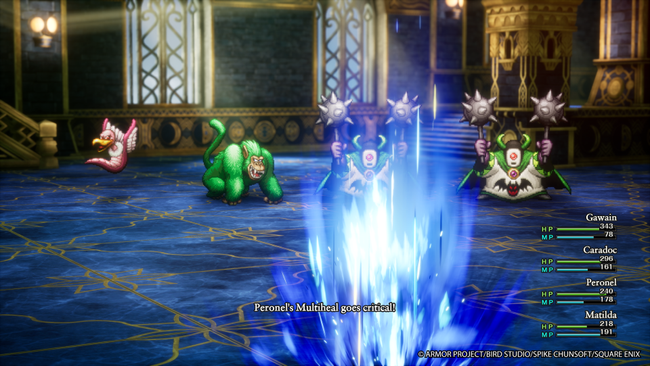
Which version of Dragon Quest I & II HD-2D Remake should you buy today?
Before covering each platform's advantages and disadvantages, I want to once again remind you that there's a save data bonus for having Dragon Quest III HD-2D Remake save data on the same platform (including the Switch version of DQ3 Remake on the Switch 2 version of this new release). Having now tested every version including the Switch version on Switch 2 and with everything covered above, I'm glad that the current platforms all deliver a good to great experience with no major issues, but I was hoping to see a better result for the native Switch 2 version of Dragon Quest I & II HD-2D Remake compared to the patched Switch 1 version of Dragon Quest III HD-2D Remake on Switch 2. You can find my thoughts on Dragon Quest I & II HD-2D Remake for each platform below:
- Dragon Quest I & II HD-2D Remake on Switch: The Switch version of Dragon Quest I & II HD-2D Remake is basically the worst version of the game technically. It is a decent way to play the game if you don't have a Switch 2 or PC handheld and want to play on the go though. If you were fine with how Dragon Quest III HD-2D Remake looked and ran on Switch 2, you will not be bothered with how Dragon Quest I & II HD-2D Remake looks and feels. Keep in mind it is still going to have sub native visuals and performance issues. I don't recommend playing it here if you have another option.
- Dragon Quest I & II HD-2D Remake on Switch 2: Dragon Quest I & II HD-2D Remake on Switch 2 is very similar to how Dragon Quest III HD-2D Remake felt after its enhancement patch. It features 30fps and 60fps target modes both docked and handheld and offers a good hybrid experience. I also think the Switch 2 portable experience at 30fps is excellent with how the game looks on the screen. For TV or docked play, you have better options on the other consoles, but the hybrid nature of the Switch 2 is definitely worth considering, especially if you use the 30fps mode.
- Dragon Quest I & II HD-2D Remake on Steam: If you play on Steam Deck or PC in general, this is the only version you should consider. It plays fantastic on Steam Deck out of the box at 60fps, looks amazing on the OLED screen, and lets you scale up if you also play on your main PC or docked on Steam Deck. I just wish it wasn't capped to 60fps like other Artdink HD-2D releases. Hopefully we see some mods get updated and tested for this soon.
- Dragon Quest I & II HD-2D Remake on PS5: If you want to play on your TV, care about trophy support, and don't care about portable play (unless you stream to a PlayStation Portal or phone which is not a native experience), this is the version of Dragon Quest I & II HD-2D Remake to get. The load times definitely make this feel snappier and quicker to get into compared to other console platforms.
- Dragon Quest I & II HD-2D Remake on Xbox: If you have access to a PC handheld or play on Xbox Series consoles and Windows 11, the Play Anywhere feature is a big selling point in addition to the Quick Resume feature on Xbox for Dragon Quest I & II HD-2D Remake. The only real issue with this version is the load times and initial syncing taking longer than other versions right now.
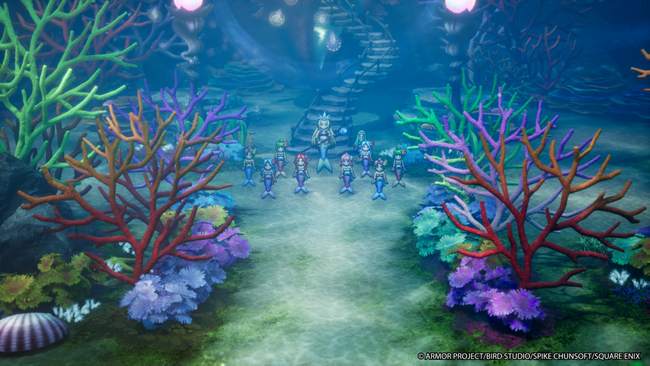
Hopefully this helped you decide where you should play Dragon Quest I & II HD-2D Remake assuming you have access to multiple platforms. If you don't, I hope this helped inform you with what sort of experience you should expect on whatever platform you play on. If you haven't gotten the game yet, note that it is recommended to play Dragon Quest III HD-2D Remake first and then play Dragon Quest I & II HD-2D Remake.
Dragon Quest I & II HD-2D Remake is now available on PlayStation 5, Xbox Series X|S, Nintendo Switch, Nintendo Switch 2, and PC (Steam, Xbox on PC). You can find all our Dragon Quest I & II HD-2D Remake guides here including our complete walkthroughs of Dragon Quest I and Dragon Quest II HD-2D Remake, all Mini Medals (DQ1 and DQ2), Scroll locations (DQ1 and DQ2), and much more.
